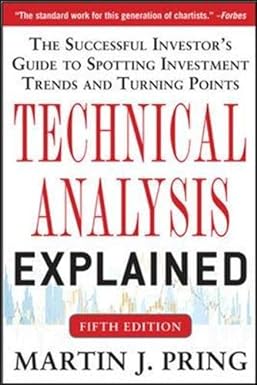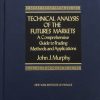Technical Analysis of the Future Markets: A Comprehensive Guide to Trading Methods and Applications
£33.20
Covers the philosophy of technical analysis, charting theory, trends, reversal patterns, continuation patterns, commodity indices, averages, oscillators, the Elliott wave theory, time cycles, computers, and trading tactics.
Read more
Additional information
| Publisher | First Edition (1 Sept. 1991), New York Institute of Finance |
|---|---|
| Language | English |
| Hardcover | 556 pages |
| ISBN-10 | 013898008X |
| ISBN-13 | 978-0138980085 |
| Dimensions | 18.95 x 4.34 x 24.08 cm |










by jlloydw
Re-read this book twenty years after the first time with only having the intention of checking a few things, but its clarity and comprehensiveness made me read the whole again. Really enjoyable and only takes a few hours for an experienced trader. For the newcomer to trading, I would highly recommend learning this book as it is indispensable to providing understanding and method in engaging with the financial markets. .
by endre_beretka@yahoo.com
As an accountant and an economist I can not ignore this book. Anyone wishes to engage in trading shares or commodities, I suggest reading this book. It is a good introduction to a beginner, or to those, who wishes to engage in trading equities. Fundamental analysis is simply not enough to succeed, you must know about technical analysis as well! It’s simple to read, BUT it is a must to practise, as TA is an art, as well a science! An econometrician will question some aspects of the book (i.e. random walk), but this does not mean that the techniques explained in the book are not applicable in the real world. I gave 4 stars out of 5, as Murphy did not include much of research Journals (to make academics happy as well) in his book.
by LIZZIE58
excellent quality
by Mr. Smith
great starter book for basic chart set ups, although i was left feeling they covered themselves for all eventualities,ie just because a chart pattern looks bullish bearish, it may well reverse on you, i suppose they are telling you as it is, which means it doesnt matter what the chart looks like it might not do what you expect. thus confirming technical analysis as a pseudo science.